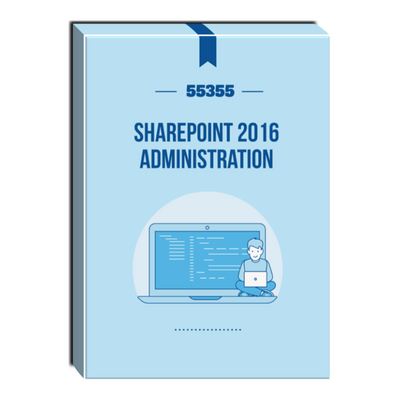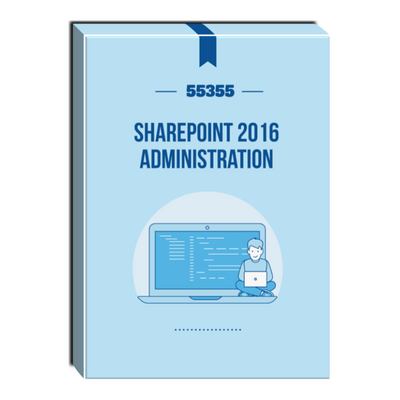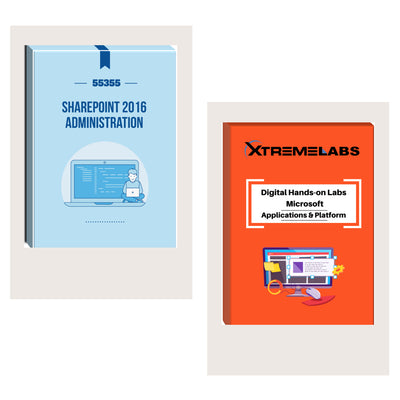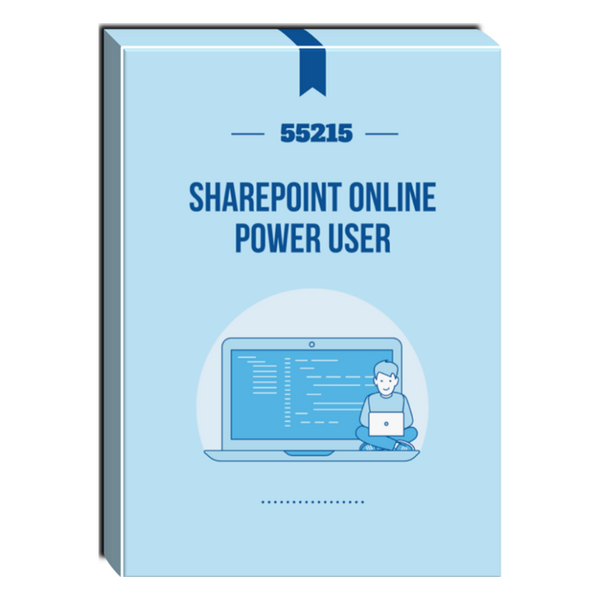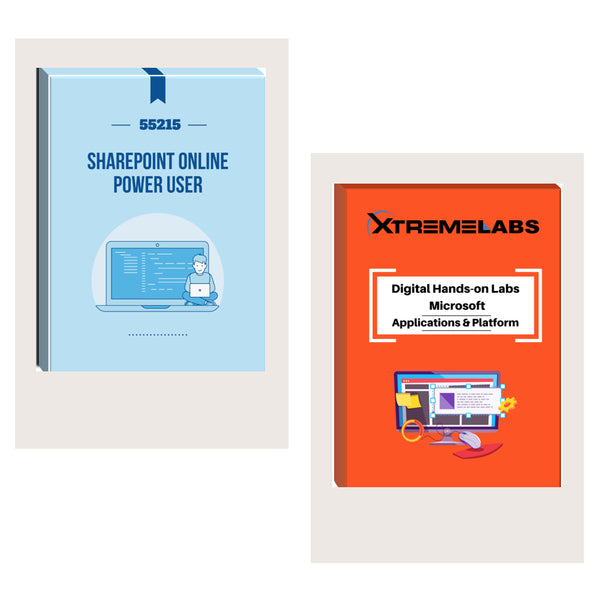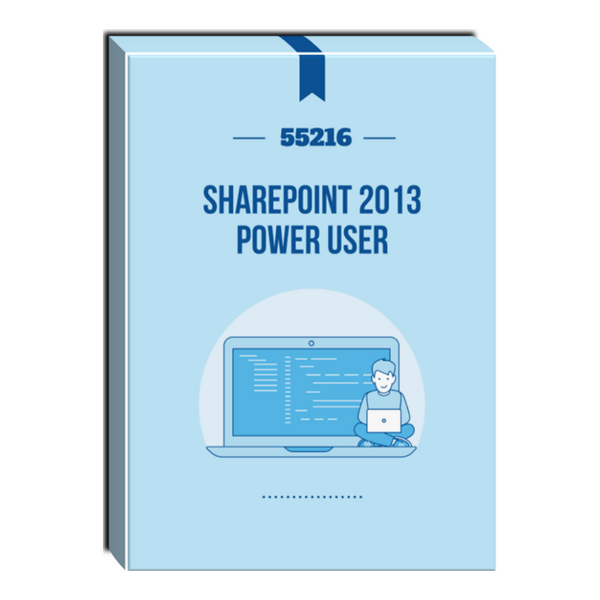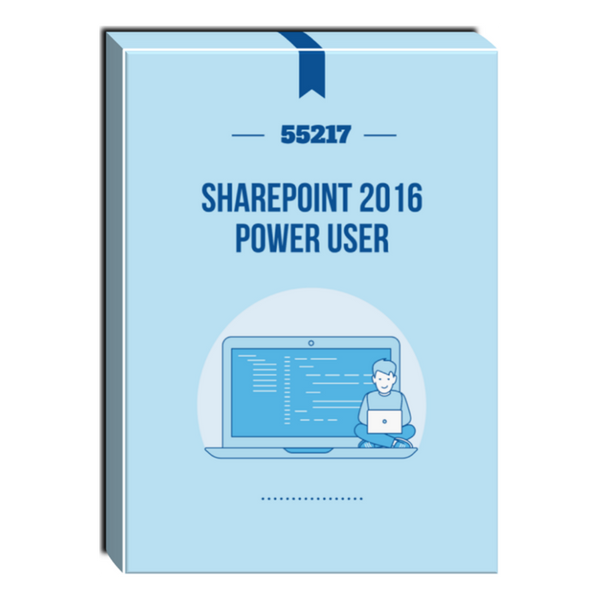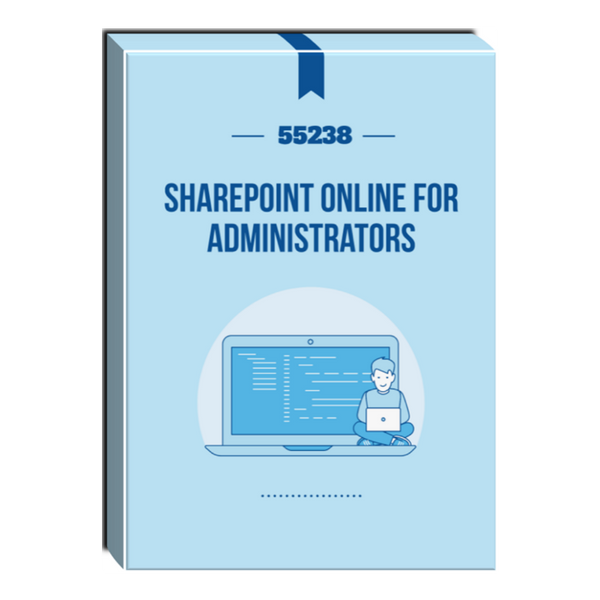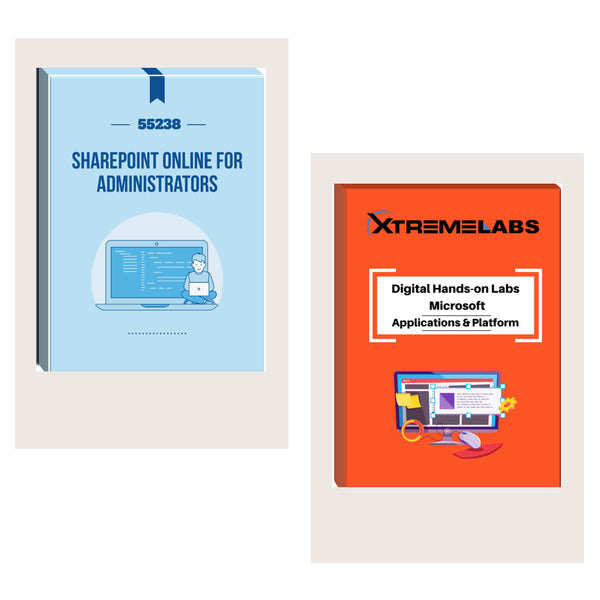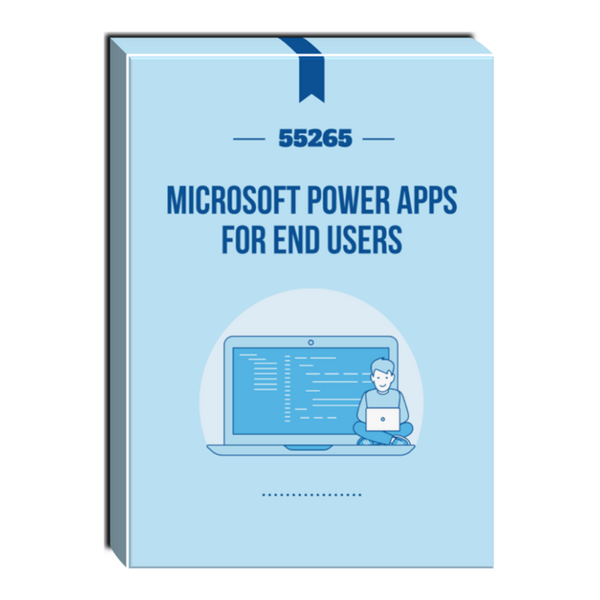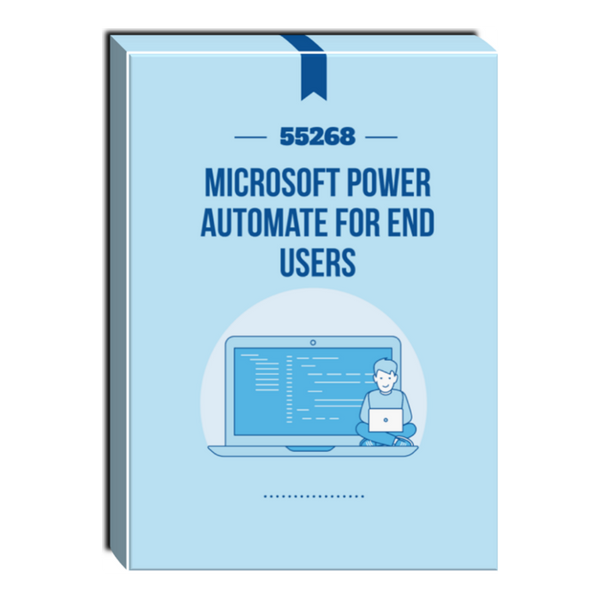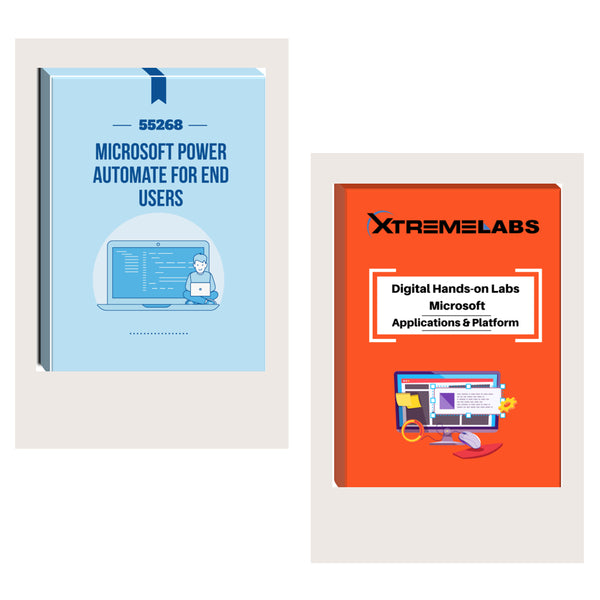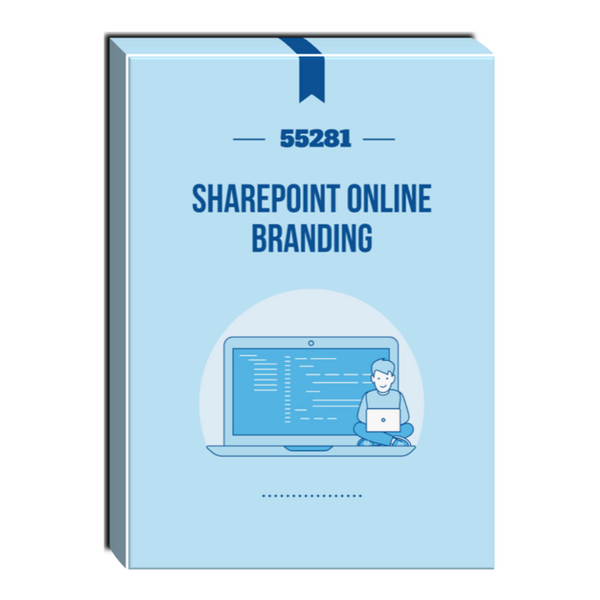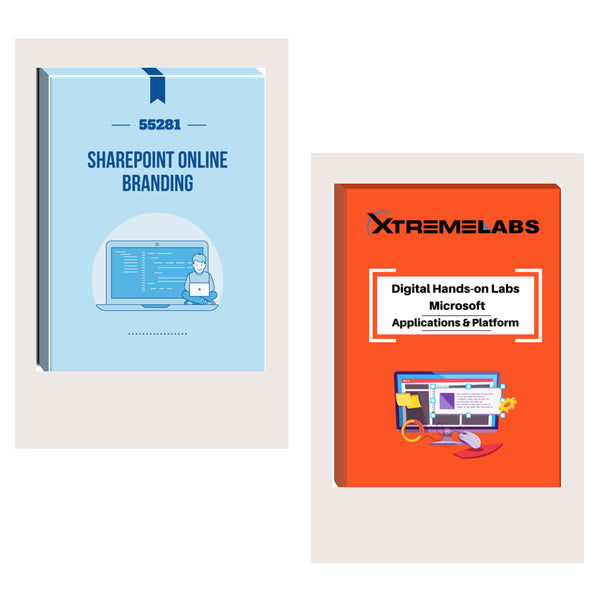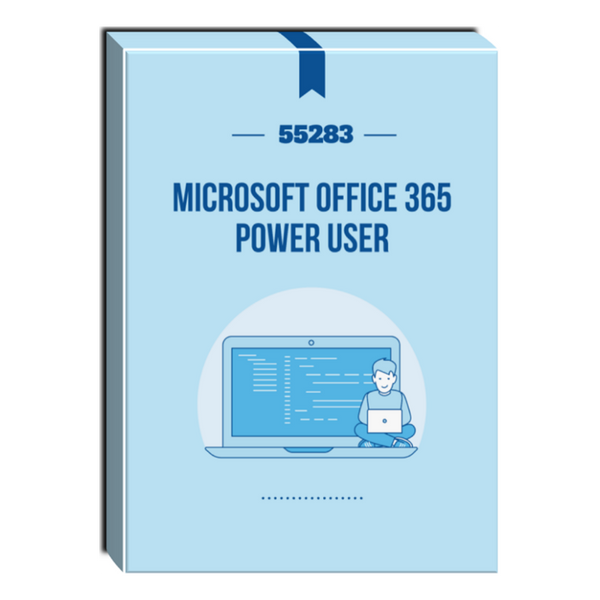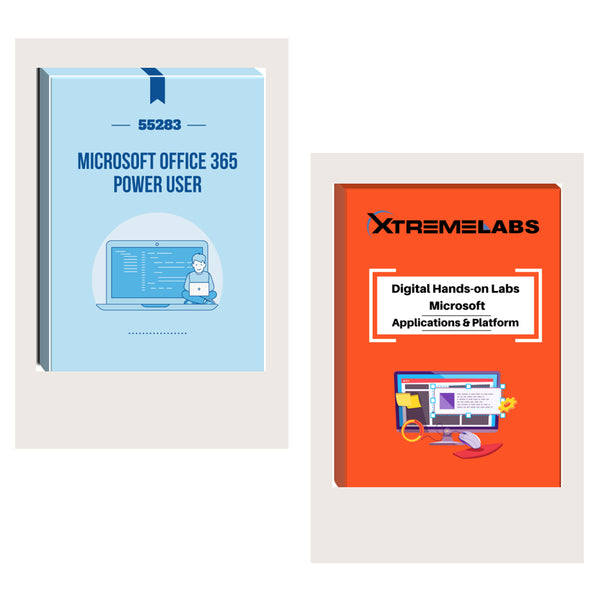Tags: Courseware , planning and administering sharepoint 2016 , SharePoint , sharepoint administrator certification , sharepoint administrator course , sharepoint administrator training , SharePoint Server
55355: SharePoint 2016 Administration Courseware
- Brand: Combined Knowledge
- Availability: In Stock
$284.27
Course 55355 is the Community Courseware equivalent of retired MOC Course 20339-1AC Planning and Administering SharePoint 2016. This SharePoint 2016 Administrator course is design for Administrators who are new to SharePoint Server Administration or who are upgrading from previous versions of SharePoint including SharePoint 2007, 2010 and 2013. Audience Profile...
Course 55355 is the Community Courseware equivalent of retired MOC Course 20339-1AC Planning and Administering SharePoint 2016. This SharePoint 2016 Administrator course is design for Administrators who are new to SharePoint Server Administration or who are upgrading from previous versions of SharePoint including SharePoint 2007, 2010 and 2013.
Audience Profile
This course is intended for a IT person wanting to learn about administrating SharePoint 2016
At Course Completion
- The Installation and configure a SharePoint 2016 Farm
- How to manage a SharePoint 2016 Farm through the GUI and PowerShell
- How to create site collections via GUI and PowerShell
- How to create and configure the all the required service applications for SharePoint 2016
- How to backup and restore in SharePoint 2016
Course Details
Course Duration: 5 Days
Module 1: Hardware, Installation and patching
This module will look at the planning and architecture of the SharePoint platform as well as the hardware requirements and minimum / recommended hardware configurations including virtualization good practices. It will include lessons on SQL good practices and understanding how SharePoint and SQL work together. It will also go through a step-by-step installation of a SharePoint server and scaling out with multiple servers including scripted installations and configuration. You will also learn all about the new Min Role deployment templates and you will build a Min Role farm as part of the lab. Finally, we will look at the new patching options for SharePoint 2016 including zero downtime patching.
Lessons
- How to build a Min Role Farm
- How to View ULS Logs
- How to document and check IIS Settings for SharePoint 2016
Lab 1: Hardware and Installation
- Building a Farm using Min Role
- View ULS Logs
- Document IIS Settings
- You will be able to build a SharePoint 2016 farm using Min Role
- You will be able to view SharePoint 2016 ULS Logs
- You will be able to check and document IIS Settings for SharePoint 2016
Module 2: Farm Management
This module will be a tour of Central Administration and PowerShell management understanding the various configuration options for a farm including post installation good practice such as log file locations, The Distributed cache, Farm solutions, mail server connection using TLS and security management of SharePoint Administrators. You will also be using ULS viewer in order to troubleshoot SharePoint deployments and installations. Finally, you will learn about server to server trusts to enable SharePoint to communicate with other applications.
Lessons
- How to manage the SharePoint Farm Administrators group
- How to configure Outgoing Email
- How to configure Incoming Email
- How to Configure Diagnostic and Usage Log Options
Lab 1: Farm Management
- Manage the Farm Administrators group
- Configure Outgoing Email
- Configure Incoming Email
- Configure Diagnostic and Usage Log options
- You will have learnt how to mange the SharePoint 2016 Farm Administrators group
- How to setup and configure the outgoing email
- How to setup and configure the incoming email
- How to configure the diagnostic and Usage log options
Module 3: Web Applications
In this module we will explore the new changes to Web Applications and discover the creation and management of them in both Central Administration and PowerShell. You will learn how to use certificates with your SSL Web applications and secure them with the TLS 1.2 protocol. We will also cover the creation of hosting Web Applications for the use of host named site collections. Finally, you will learn how to optimize your Web Applications including Throttling and access policies.
Lessons
- How to define a new Managed Account
- How to add new IP Addresses to a SharePoint Server
- How to create a claims based web application in SharePoint Central Administration
- How to create a claims based web application in PowerShell
- How to create a hosting web application in PowerShell
Lab 1: Web Applications
- Define a new Managed Account
- Add two new IP addresses to SharePoint1
- Create a Claims based web application in CA
- Create a Claims Web Application using PowerShell
- Create a Hosting web application using PowerShell
- You will be able to define a new Managed Account
- You will be able to add new IP Addresses to a SharePoint server
- You will be able to create a claims based web application in SharePoint Central Administration
- You will be able to create a claims based web application in PowerShell
- You will be able to create a hosting web application in PowerShell
Module 4: Site Collections
This module covers the creation and management options for Site Collections including good practices for database sizing and management, migrating site collections to new databases and understanding the differences between path based and host named site collections. You will learn how to create and manage site collections through central administration and PowerShell.
Lessons
- How to create a managed path
- How to create a site collection using SharePoint Central Administration
- How to create a site collection using PowerShell
- How to create a site collection in its own database using SharePoint Central Administration
- How to create a site collection in its own database using PowerShell
- How to create a host named site collection using PowerShell
Lab 1: Site Collections
- Create a new Managed Path in Portal Web App
- Create a new Site collection using CA
- Create a new Site collection using PowerShell
- Create a site collection in its own database using CA
- Create a site collection in its own database using PowerShell
- Create a host named site collection using PowerShell
- You will able to create a new managed path in SharePoint 2016
- You will be able to create a new site collection using SharePoint Central Administration
- You will be able to create a new site collection using PowerShell
- You will be able to create a new site collection in its own database using SharePoint Central Administration
- You will be able to create a new site collection in its own database using PowerShell
- You will be able to created a host named site collection using PowerShell
Module 5: Service Applications
In this module we will look at what is new, changed and depreciated in SharePoint 2016 and the architecture behind the core service applications. You will also learn how to work with multiple farm scenarios including publishing services between farms and how to scale the services. You will also learn how Min Role and service Applications align to each other and learn to scale services through both Min Role and custom farm deployment scenarios.
Lessons
- How to create a State Service Application
- How to create a Search Service Application
- How to create the Managed Metadate Service
Lab 1: Service Applications
- Create the State Service Application
- Create the Search Service Application
- Create the Managed Metadata Service
- How to create the State Service Application
- How to create the Search Service Application
- How to create the Managed Metadata Service
Module 6: Application Management
A key Service to SharePoint 2016 that allows SharePoint 2016 Administrators to setup their own on-premise App marketplace hub and maintain control of the Apps stored in it and those subscribed to from the Internet Marketplace. In this module we will go through setup and configuration and publish commercial Apps into your SharePoint farm.
Lessons
- How to add a new IP and Certificate to a SharePoint Web Application
- How to configure DNS for SharePoint Web Application
- How to Create a Subscription Settings Service Application
- How to create the Application Management Application Service
- How to configure the application URLs
- How to create the App Catalog Site Collection
- How to Add Apps to the catalog
Lab 1: Application Management
- Create new CK Apps IP Address and Certificate
- Configure App DNS Domain Name
- Add a DNS Wildcard A record pointing to SP FE
- Create the Subscription Settings Service Application
- Create the Application Management application service
- Configure the Application URLs
- Create App Catalog Site Collection
- Add Apps to the catalog
- How to create new IP address and Certificates and add them to IIS Website
- How to configure DNS records for App Catalog
- How to Create the subscription setting service application
- How to create the application management application service
- How to configure the application URLs
- How to create the App Catalog Site Collection
- How to add apps to the catalog
Module 7: Managing the User Profile Service
In this module you will learn how to build the User Profile Application and what is new in SharePoint 2016 and the options for populating your user profiles in SharePoint from various directory sources. You will learn how to leverage the new Microsoft Identity Management 2016 server for two-way synchronization and also importing objects from other LDAP sources. Finally, you will look at the new My Sites and the social options provided by this service.
Lessons
- How to create the My Site Web Application
- How to create the User Profile Service Application
- How to Configure the User Profile Synchronization Permissions
- How to create the Active Directory Import Connection
- How to assign permissions for the AD Group to create a My Site
- How to create a My Site
Lab 1: Managing the User Profile Service
- Create the My Site Web Application
- Create the User Profile Service Application
- Configure User Profile Service Application Permissions
- Create the Active Directory Import Connection
- Assign Permissions to Ad Group to create a My Site
- Create a My Site
- You will be able to create the my site web application
- You will be able to create the user profile service application
- You will be able to configure the permissions for the user profile service
- You will be able to create the Active Directory Import Connection
- You will be able to assign the correct permissions to the Ad group needed to create a my site
- You will be able to create a my site
Module 8: Search
This module will look at the architecture of the Search Service and discover how the new components are configured, managed and optimized for performance and resilience. You will be learning about the crawl and query capabilities in SharePoint 2016 as well as the changes from a user’s perspective. Finally, you will learn about Search scalability and deploying its components across multiple servers in your farm including custom deployed farms and Min Role farms.
Lessons
- How to view the currently Search Topology
- How to create an Enterprise Search Centre
- How to configure a new search schema property
- How to create a site collection-level result source
- How to create a new content source
Lab 1: Search
- Viewing Current Search Topology
- Create an Enterprise Search Centre
- Configure a new Search Scheme property
- Create a site collection-level result source
- Create a new content source
- You will be able to view the currently search topology
- You will be able to create enterprise search center
- You will be able configure a new search scheme property
- You will be able to create a site collection-level result source
- You will be able to create a new content source
Module 9: Office Online Server
Despite its name this is a module that takes you through the planning and deployment of the on-premises version of Office Online Server previously known as Office Web Application Server. You will discover hardware and software requirements and be taken through a full installation and connection to SharePoint 2016. You will then discover how the service then gets leveraged by users in SharePoint through document and search preview.
Lessons
- How to install the pre-requisites for Office Online Server
- How to install the Office Online Server Binaries
- How to create the Office Online Server SSL Certificate
- How to create the Office Online Server Farm
- How to connect to the farm from SharePoint
- How to test the connectivity
Lab 1: Office Online Server
- Install the pre-requisites
- Install the binaries
- Create the OOS Certificate
- Create the OOS Farm
- Connect to the farm from SharePoint1
- Test Connectivity from SharePoint2
- You will be able to install the pre-requisites for Office Online Server
- You will be able install the Office Online Server Binaries
- You will be able to create the Office Online Server SSL Certificate
- You will be able to create the Office Online Server farm
- You will be able to connect to the Office Online Server Farm from SharePoint
- You will be able to test connectivity of Office Online Server
Module 10: Enterprise Content Management
In this module you will be looking at all the components that make up an ECM story including Lifecycle management, compliancy and EDiscovery. You will learn Records Management, hold and delete policies and you will learn how to leverage discovery of Email as well as data from SharePoint and file shares plus learn how Data Loss Protection works in SharePoint 2016.
Lessons
- How to create and Apply a site policy
- How to create discovery sets
- How to configure In Place records management
- How to configure the records center
- How to configure DLP
Lab 1: ECM
- Creating and Applying a Site Policy
- Discovery sets in eDiscovery
- Configure In-Place Records Management
- Configure the Records Center
- Configure DLP
- You will be able to create and Apply a site policy
- You will be able to create discovery sets
- You will be able to configure in-place records management
- You will be able to configure the record center
- You will be able to configure DLP
Module 11: Web Content Management
This module will focus on the publishing aspect of SharePoint including Intranet hosting, publishing pages, multi-language site variations and leveraging search and the product catalog for building aggregated publishing sites. You will also learn about the options for deploy content between farms using content deployment and working with master pages and page layout templates.
Lessons
- How to configure cross-site publication
- How to configure content deployment
Lab 1: WCM
- Configure Cross-site Publication
- Configure Content Deployment
- You will learn how to configure cross-site publication
- You will learn how to configure content deployment
Module 12: Workflow Server
Building workflows is a key part of the SharePoint ECM story, in this module you will learn the architecture, hardware and planning and then learn how to build and deploy the workflow manager server and connect it to your SharePoint farm. You will then see how you can now create legacy SharePoint workflows and the newer workflows using the workflow manager server.
Lessons
- How to install Workflow Manger server and Client Binaries
- How to configure the workflow farm
- How to patch the workflow farm manager and clients
- How to register the workflow service in SharePoint
- How to test Workflow creation
Lab 1: Workflow
- Install workflow manager server and client binaries
- Configure the workflow farm
- Patch the workflow farm manger and clients
- Register the workflow service in SharePoint
- Test Workflow creation
- You will learn how to install the workflow manger server and client binaries
- You will learn how to configure the workflow farm
- You will learn how to patch the workflow farm manager and clients
- You will learn how to register the workflow service in SharePoint
- You will learn how to test the Workflow creation
Module 13: Business Connectivity Services and Secure Store
In this module you will learn how to plan, build and configure the Business Connectivity Service (BCS) along with the Secure Store Service and Single Sign on to create data connections to back-end data applications and then consume them in SharePoint using data web parts.
Lessons
- How to configure the secure store service
- How to create the BCS service Application
- How to setup the products database
- How to import the BCS Definition
- How to use the BDC file in a list web part
Lab 1: BCS and Secure Store
- Configure the secure store service
- Create the BCS Service Application
- Setup the products database
- Import the BCS Definition
- Use BDC file in a list web part
- You will learn how to configure the secure store service
- You will learn how to create the BCS Service application
- You will learn how to setup the products database
- You will learn how to import the BCS Definition
- You will learn how to use the BDC file in a list web part
Module 14: Hybrid SharePoint
This module focuses on the new capabilities for SharePoint in a hybrid world including options for DR and scalability through Azure, using the Hybrid Search crawl appliance and configuring the Office 365 options for consuming and redirecting services such as One Drive, My sites and Yammer. You will gain an overall understand of hybrid as a concept and what are the business considerations that need to discuss when considering hybrid deployment options. You will learn about the differences between infrastructure as a service (IaaS) for SharePoint and Software as a service (SaaS) plus directory replication for user account synchronization.
Lessons
- Shown and Demonstrated the Hybrid features of SharePoint 2016
Lab 1: Click here to enter text.
- Click here to enter text.
- You will be shown how what the hybrid features of SharePoint 2016 are and a basic understanding of them
Module 15: Backup and Restore
Disaster recovery should be a key focus for any SharePoint administrator. In this module you will learn all aspects of SharePoint DR along with backup and restore including the infrastructure element such as SQL databases as well as specific SharePoint components and content. You will learn about farm backups, web applications, service applications as well as site collection, list/libraries and item level restore capabilities out of the box. As part of this module you will also learn about the 3rd party options available and the pro’s and con’s and around all the options.
Lessons
- How to backup SharePoint 2016 Content
- How to delete SharePoint 2016 Content
- How to restore SharePoint 2016 Content via PowerShell
- How to recover a unattached content database
Lab 1: Disaster Recovery
- Backup Content
- Delete Content
- Restore Content via PowerShell
- Unattached Content Database Restore
- You will learn how to backup SharePoint 2016 Content
- You will learn how to delete SharePoint 2016 Content
- You will learn how to restore SharePoint 2016 Content via PowerShell
- You will learn how to recover a unattached content database
Module 16: Upgrade
This module is concentrating on the options available for upgrading from previous versions of SharePoint and some of the key design and planning elements that need to be considered before starting an upgrade process. We will cover upgrading from SharePoint 2007, 2010 and 2013. You will learn to upgrade both content databases and service applications to SharePoint 2016.
Lessons
- How to restore and attach a SharePoint 2013 Database
- How to upgrade a SharePoint 2013 MMS Service Application
Lab 1: Database Upgrade
- Restore and Attach SharePoint 2013 Database
- Upgrade a SharePoint MMS Service Application
- You will learn how to restore and attached a SharePoint 2013 Database
- You will learn how to upgrade a SharePoint 2013 MMS Service Application
Prerequisites
- No previous experience of SharePoint is required
- Basic knowledge of Active Directory
- Basic knowledge of Internet Information Server (IIS).

